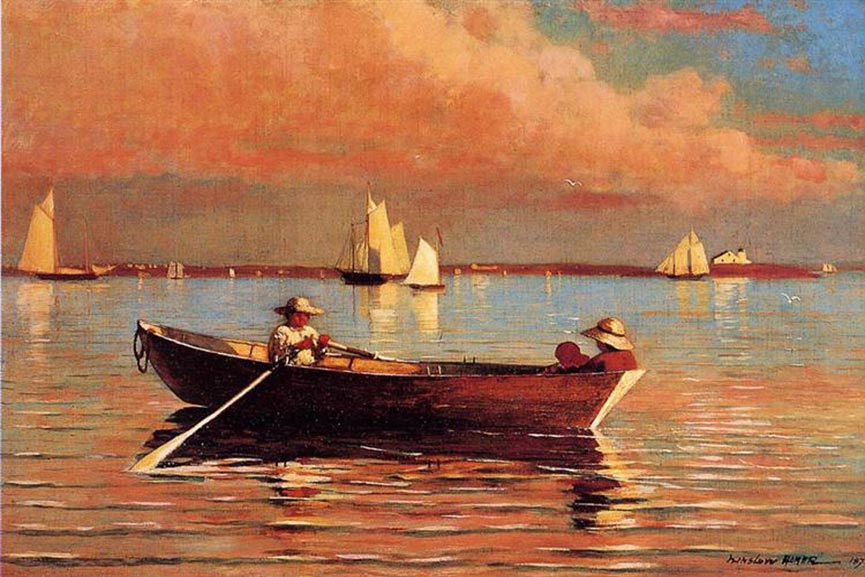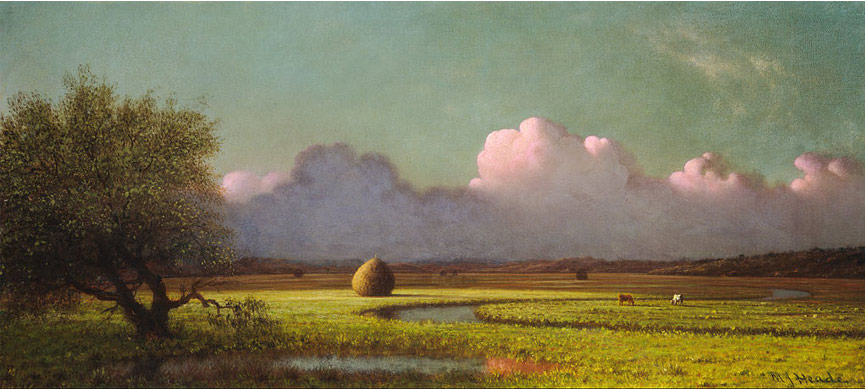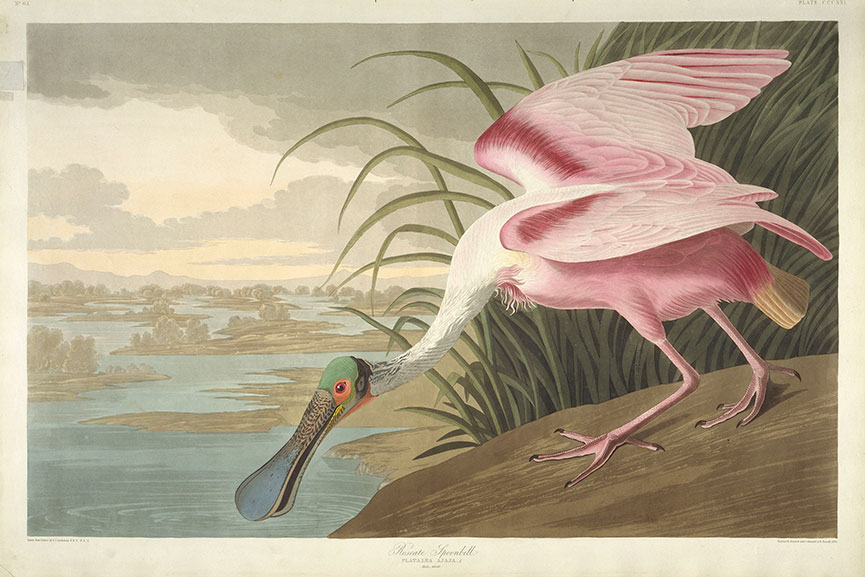Iconic Landscape and Nature Paintings
- Water Lilies - Claude Monet
- Vincent van Gogh - The Starry Night
- Gloucester Harbor - Winslow Homes
- The Oxbow (The Connecticut River Near Northampton - Thomas Cole)
- Martin Johnson Heade, Sunlight and Shadow: The Newbury Marshes
- Albert Bierstadt, Looking down Yosemite Valley
- Road Near Mont Sainte-Victoire - Paul Cezanne
- The Flamingos by Henri Rousseau
- Black Mesa Landscape - New Mexico – Out Back of Marie's Georgia O'Keeffe
- Birds of America by John James Audubon
Nature painting has been shaped by two primary art traditions: Chinese landscape art and Western styles. Notable nature artworks span various types, from highly accurate depictions of nature to intricate watercolor illustrations of newly discovered species and recent global findings.
Nature has always been a muse for artists, offering an ideal backdrop to express emotions, contemporary styles, and artistic languages. Historically, artists would replicate nature within their studios, leading to some of the most memorable art pieces. However, with the rise of the Impressionism movement, artists started painting directly in nature. This shift made nature the foundation for many significant artistic milestones.
Studying the shifting light and understanding color perception became a method to understand the world around us. Claude Monet's works, particularly his series on light in the Rouen cathedral, inspired many.
Wassily Kandinsky, a trailblazer in abstract art, drew inspiration from nature. His pieces emphasized the concepts of spirituality and its implications in art. Modern landscape artworks highlight the continued interest and allure artists find in painting in natural settings.
Below are some of the most esteemed nature artworks. Dive in to appreciate their beauty.
Water Lilies - Claude Monet

“water Lilies” - Claude Monet
The Art History is famous for Claude Monet's landscape paintings. His paintings, which explored the perception and changing nature of light in his works, defined the Impressionist style.
Haystacks, Le Dejeuner sur l'Herbe, and his famous Water Lilies (inspired by Manet's masterpiece) are examples of the new technique – en plein air. Claude Monet, who took his easel outdoors, was one of the many Impressionist and Post-Impressionist artists who promoted direct contact with nature and used it as a tool to develop new trends.
Vincent van Gogh - The Starry Night

Vincent Van Gogh - The Starry Night
After the death of the Dutch Post Impressionist artist Vincent Van Gogh, the wild and expressive works of this artist began to gain wide popularity. The nature paintings of Vincent Van Gogh are not only some of his most expressive works but also images that, for many people, are like footprints of inner turmoil and workings of the author's mind.
The Starry Night, one of his best-known and most beloved paintings, is awash in vibrant, swirling colors. Wheatfield Under Clouded Skies and Daubigny’s Garden are two other famous nature paintings by the artist. Both were painted during the last few weeks of his lifetime.
Gloucester Harbor - Winslow Homes

Gloucester Harbor - Winslow Homes
Self-taught American Winslow HOMER began his career as a commercial illustrator. He was fascinated by nature and began to explore the traditional oil medium. Soon, he became known for his landscapes and maritime subjects created during his vacations.
Gloucester Harbor is a nature painting that shows the changing light and tranquil atmosphere of a vacation by the sea. Sunlight on the Coast is part of the Ohio Toledo Museum of Art collection. Song of the Lark and Cloud Shadows are also nature-inspired works by the artist.
The Oxbow (The Connecticut River Near Northampton - Thomas Cole)

The Oxbow (The Connecticut River Near Northampton - Thomas Cole)
Thomas Cole, an American artist, is seen as the pioneer of the Hudson River School. This group of landscape painters drew inspiration from Romanticism. They highlighted nature's wild and expressive aspects, often weaving in philosophical themes.
Cole's artworks, like Distant View of the Niagara Falls and The Oxbow, beautifully capture America's scenic landscapes. Many view his pieces as symbolic art, delving deeper than just nature's portrayal.
Martin Johnson Heade, Sunlight and Shadow: The Newbury Marshes

Martin Johnson Heade, Sunlight And Shadow: The Newbury Marshes
American artist Martin Johnson Heade traveled extensively in tropical regions. These journeys inspired many of his artworks, which feature birds and blossoms. Over time, he grew fond of the salt marshes in the New England coastal area.
This artwork showcases his interest in these marshes and his keen observation of landscapes. He also created other notable pieces like Rocks in New England and Rhode Island Scenery.
Albert Bierstadt, Looking down Yosemite Valley

Albert Bierstadt, Looking Down Yosemite Valley
German-American artist Albert Bierstadt is linked to the Hudson River School and was deeply influenced by the American West. His nature artworks often celebrated the splendor of the wilderness, including its wildlife. His piece Gazing into Yosemite Valley is among his most admired works, often connected to the Rocky Mountain School Movement.
Road Near Mont Sainte-Victoire - Paul Cezanne

Road Near Mont Sainte-victoire - Paul Cezanne
Paul Cezanne, a French artist, played a significant role in the Post-Impressionist Movement. Recognized as a groundbreaking artist of the 20th century, Cezanne moved away from conventional art perspectives, focusing on form exploration.
His approach to portraying objects uniquely in his art led him to use geometric shapes and a flattened painting surface, paving the way for Cubism. His renowned nature artwork, Path by Mont Sainte-Victoire, reflects his aim to depict nature using basic forms, solid colors, and lively hues.
The Flamingos by Henri Rousseau

The Flamingos By Henri Rousseau
Henri Rousseau, a French Post-Impressionist painter, claimed to have had "no other teacher than nature". Many consider Rousseau a self-taught painter and have praised his depictions of human figures and jungles. His The Flamingos and The Dream are both celebrated works that show the juxtaposition between the real and the imaginary.
Black Mesa Landscape - New Mexico – Out Back of Marie's Georgia O'Keeffe

Black Mesa Landscape - New Mexico – Out Back Of Marie's Georgia O'keeffe
Georgia O'Keeffe, an American artist, is considered the mother of modernism. Her goal, closely connected to those innovative European artists from the 20th century, was to abstract the natural world to make it more appealing. She was known for her large-scale flower paintings.
Her paintings, inspired by her time spent in New Mexico, where she bought a ranch and lived, are considered some of the first abstracted nature images. The multicolored cliffs of New Mexico inspired her famous paintings, Black Mesa Landscape and White Palace. Pineapple Bud, Calla Lilies, and Red are some of her most famous flower paintings.
Birds of America by John James Audubon

Birds Of America By John James Audubon
The French-American artist John James Audubon was also a naturalist and ornithologist. The Birds of America, his famous book in ornithology, was an important resource. He is credited with discovering 25 new bird species. Golden Eagle, American Crow, and White Gyrfalcons are some of his highly detailed and celebrated paintings.
As a tribute to his accomplishments as an artist and an explorer, he has been honored by a number of institutions that celebrate nature.
No Comments Yet...